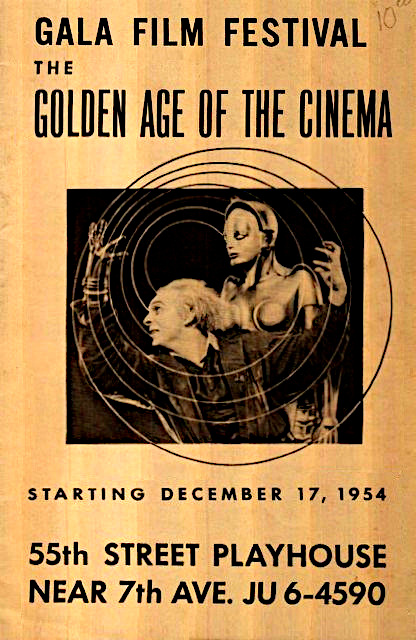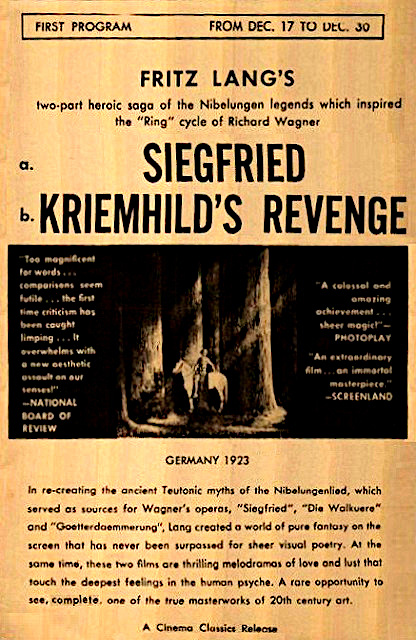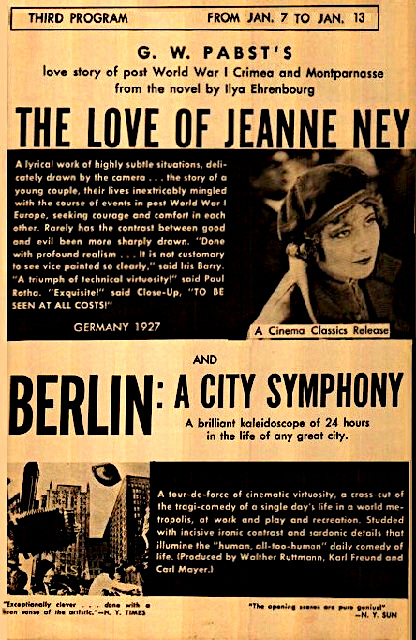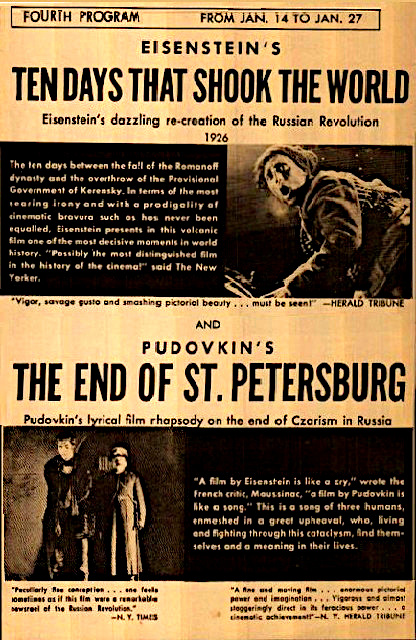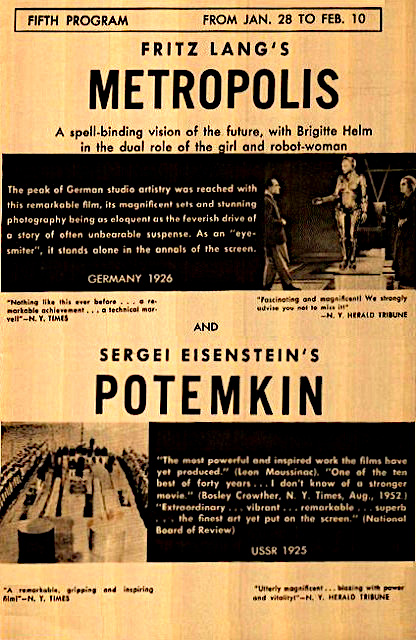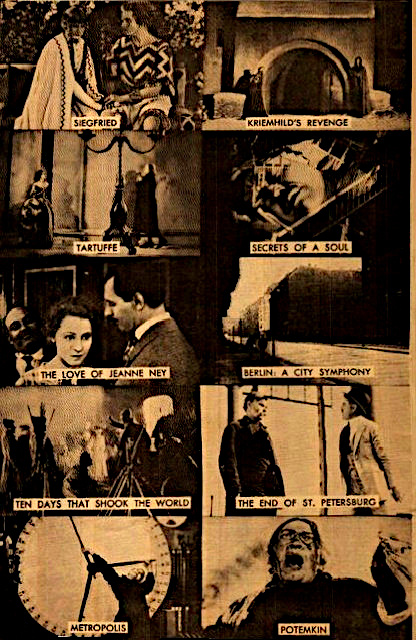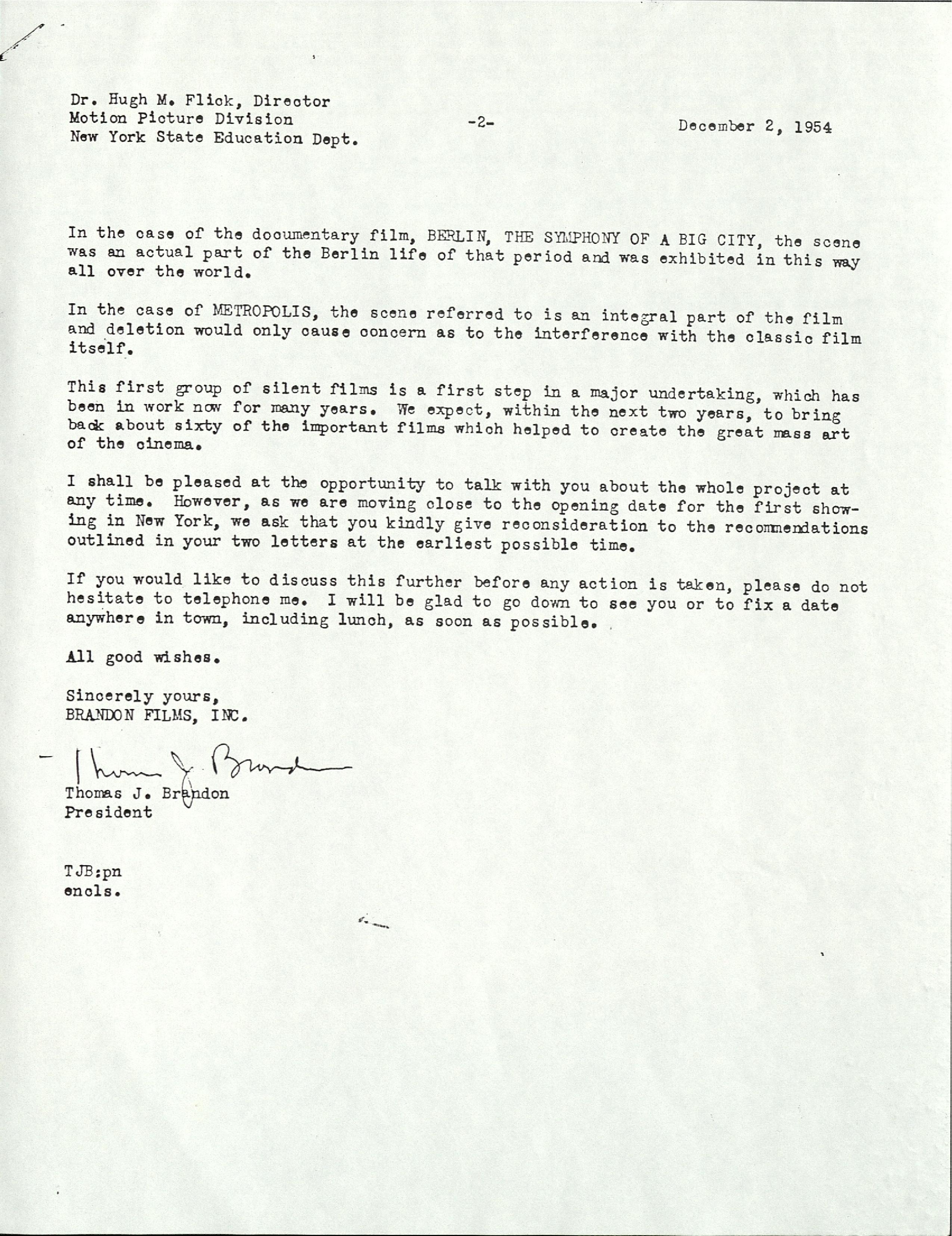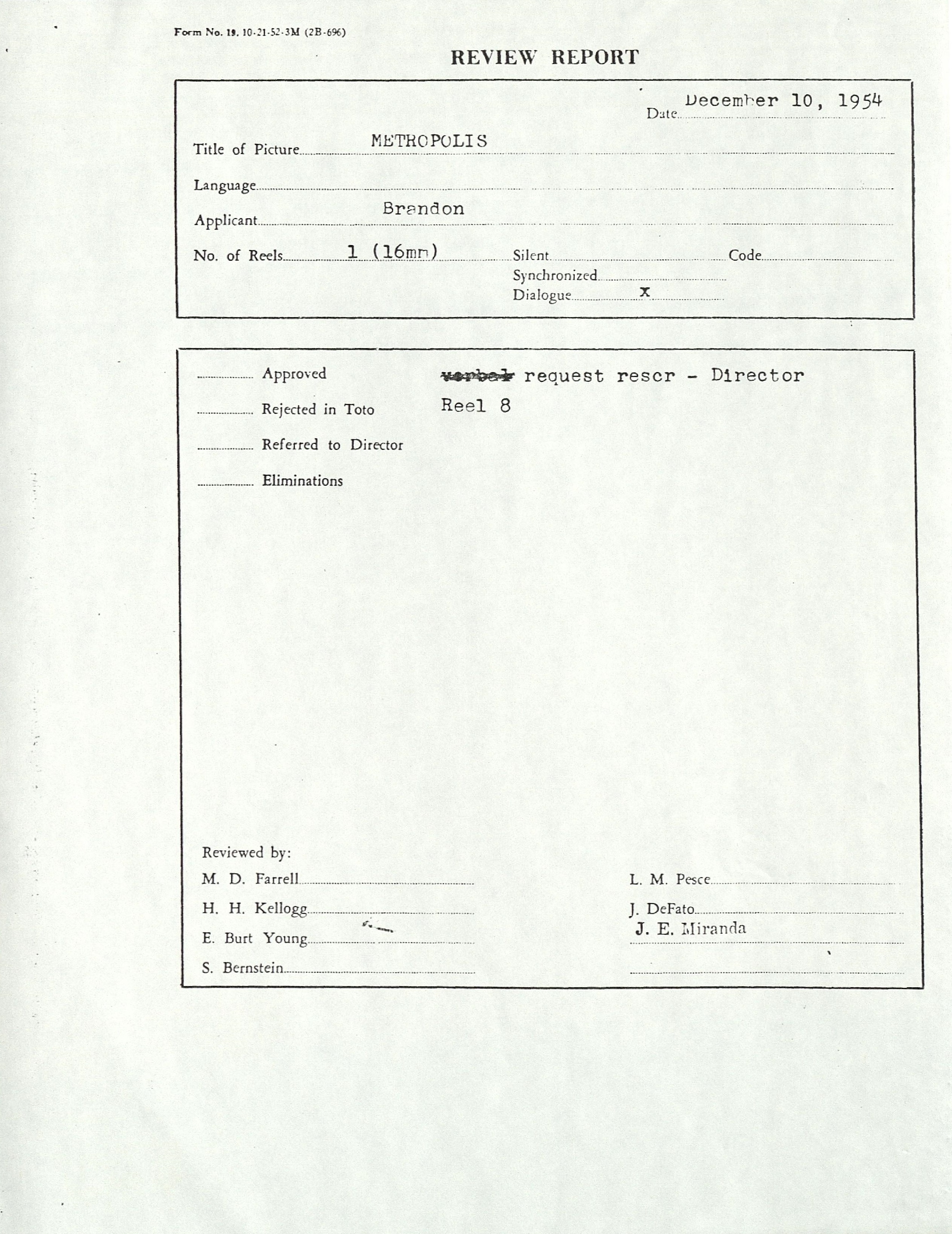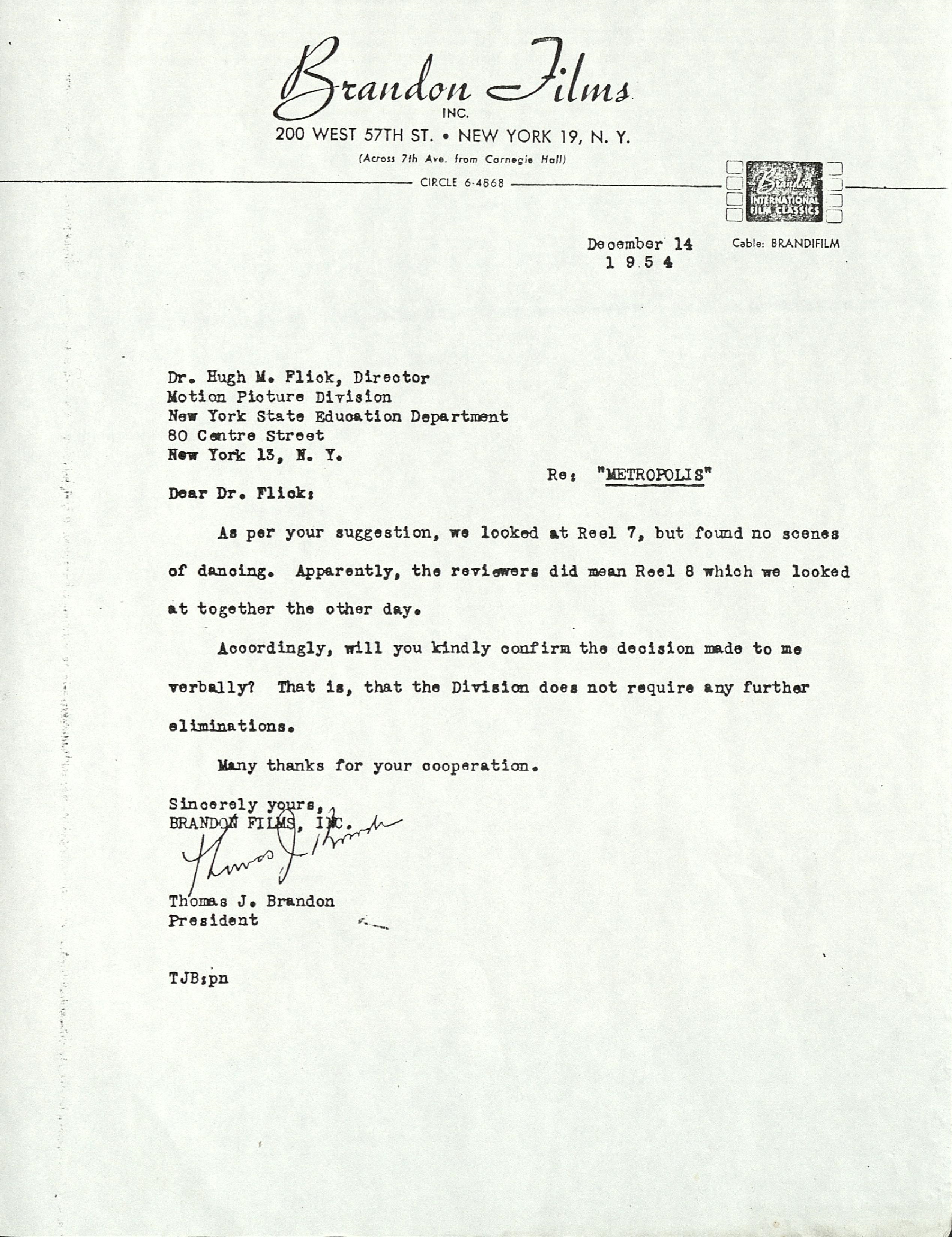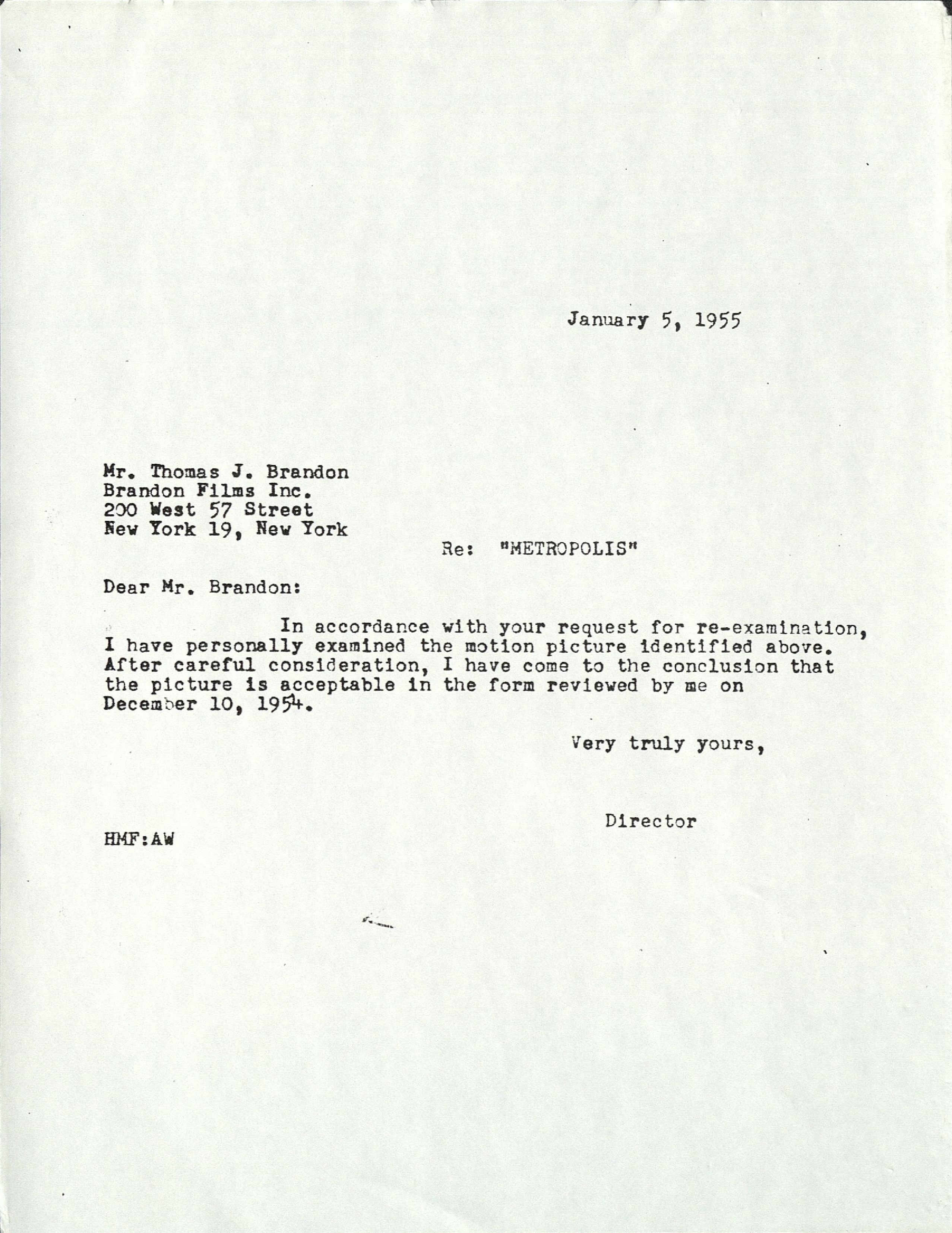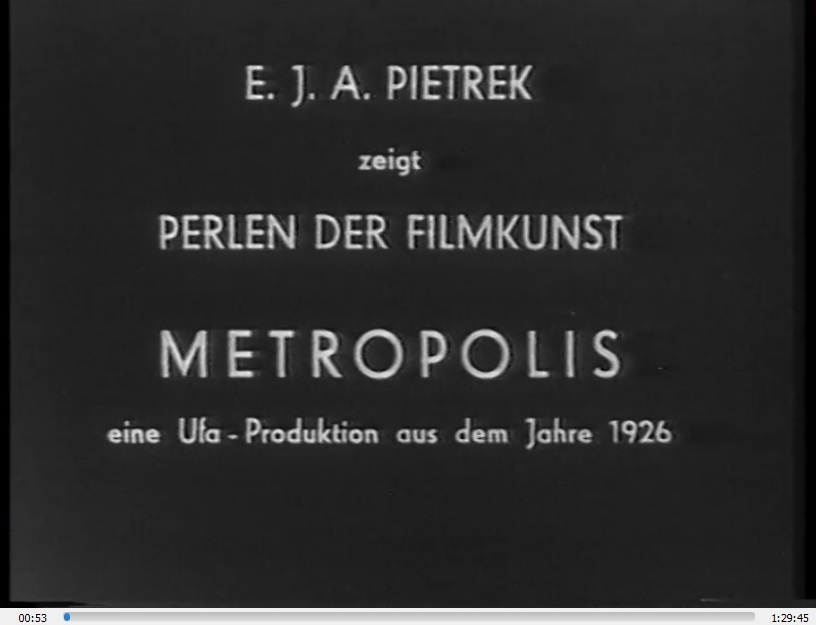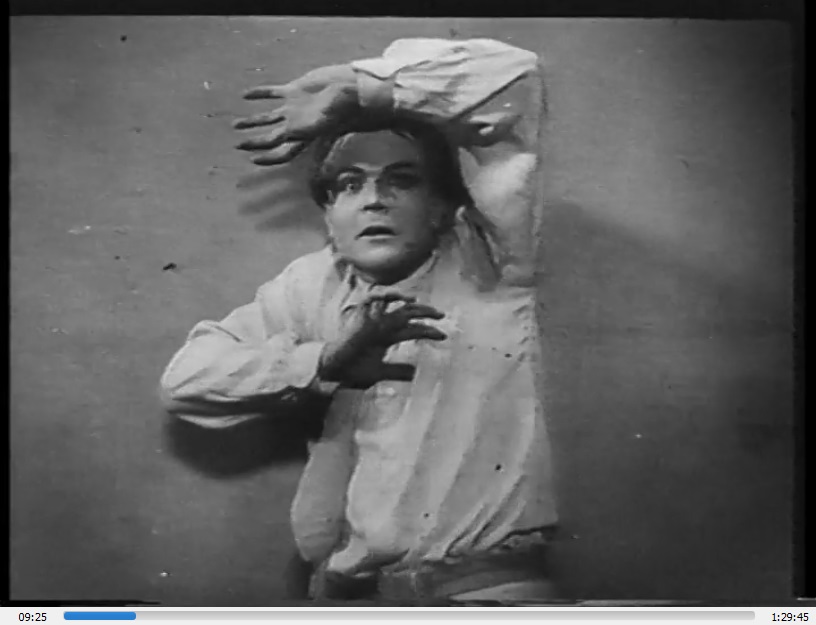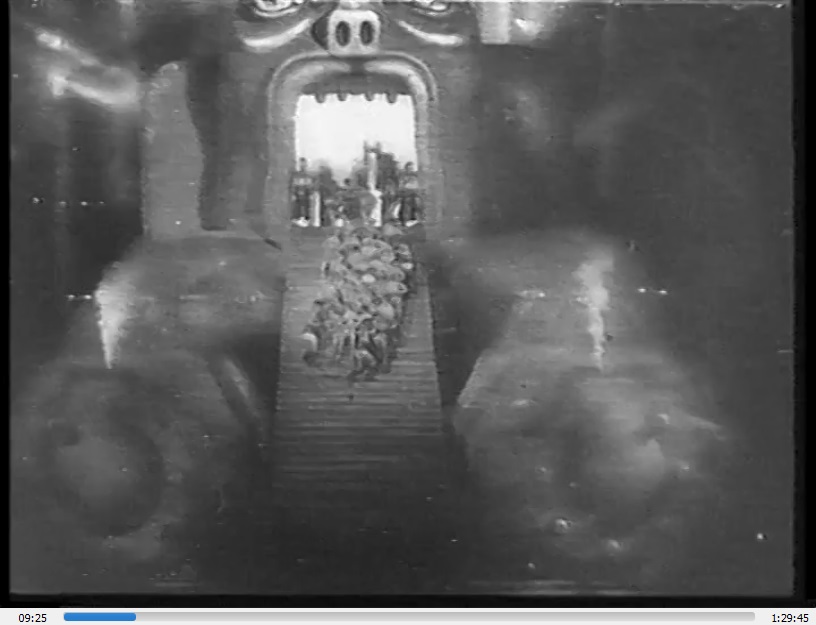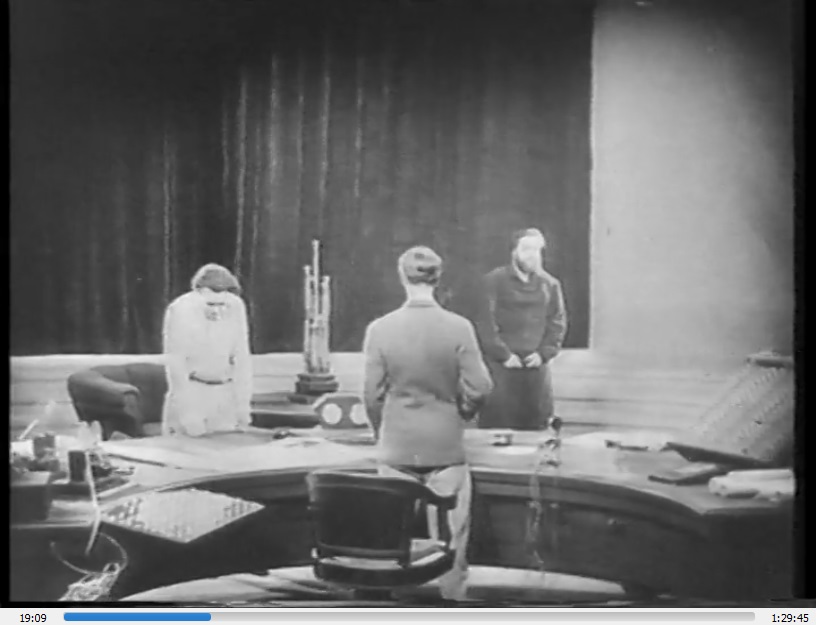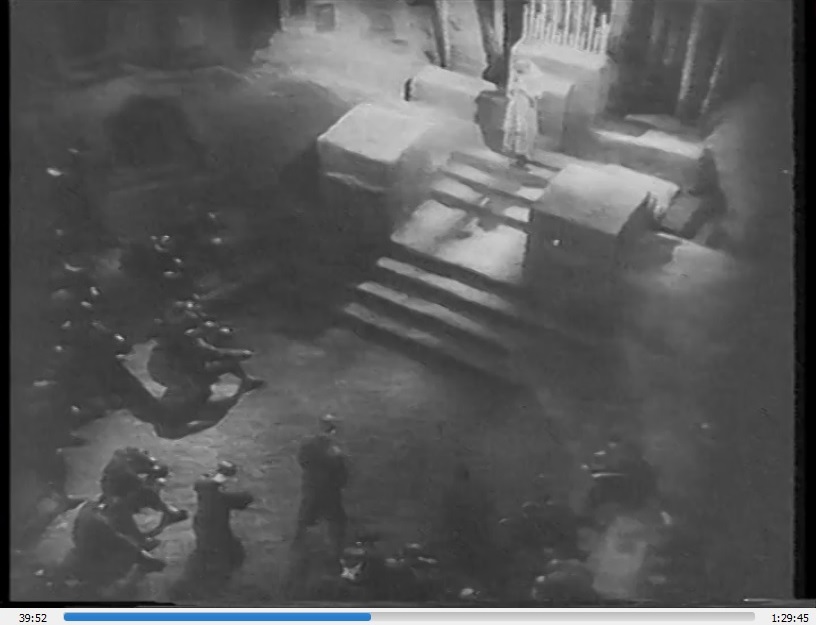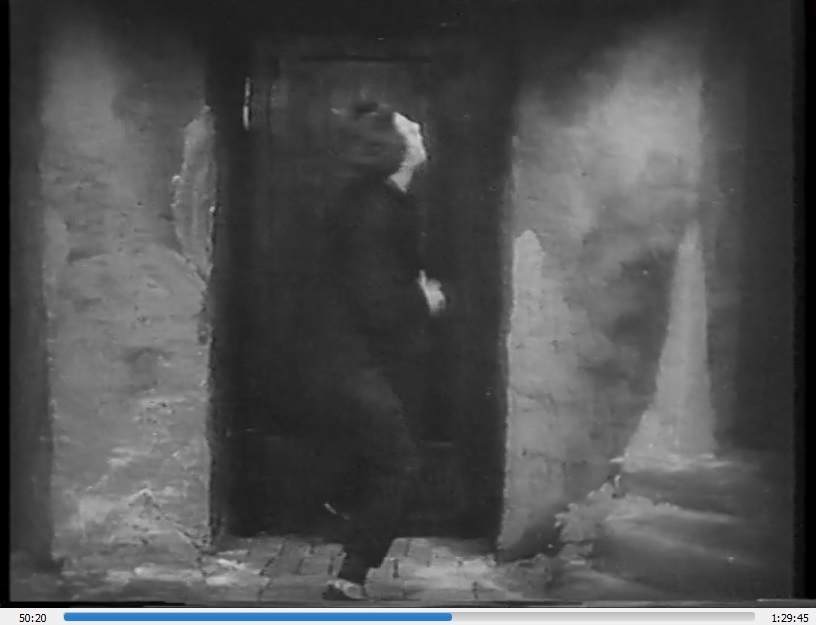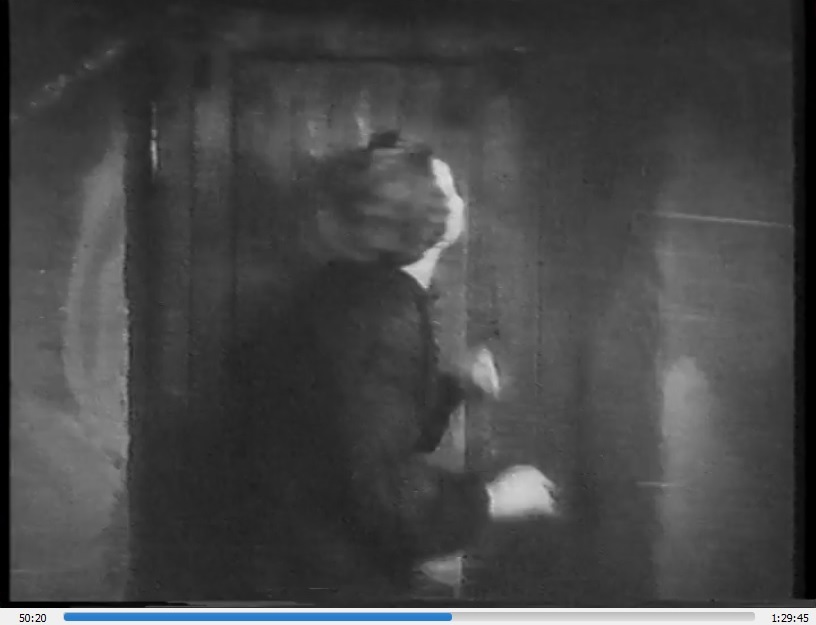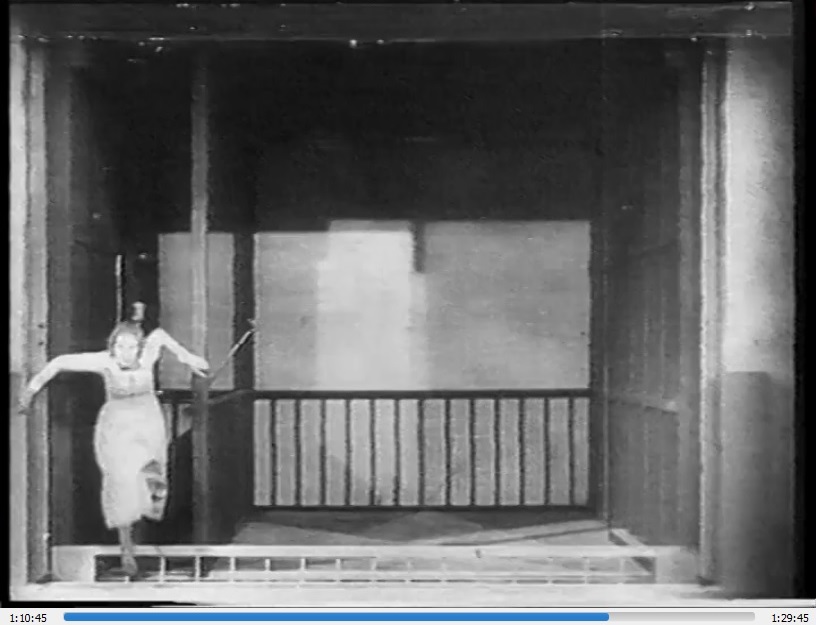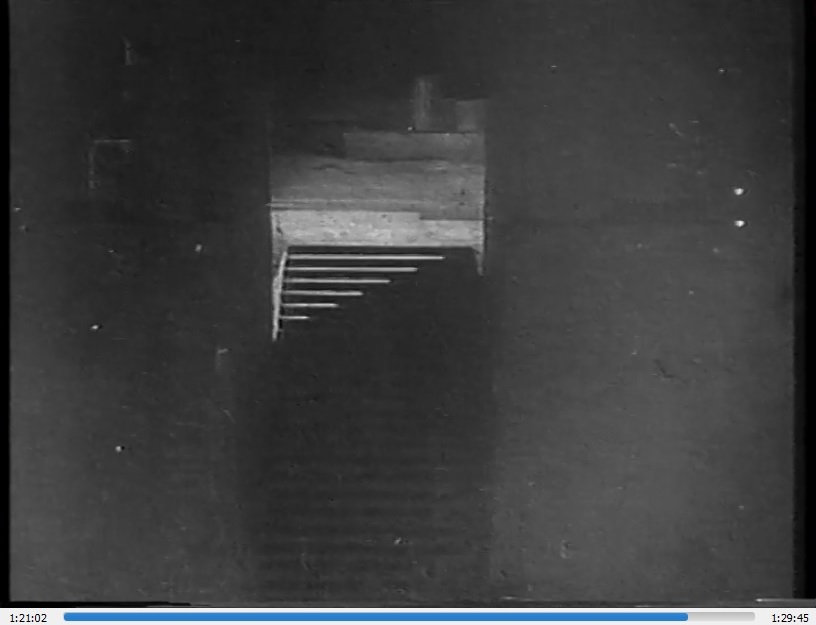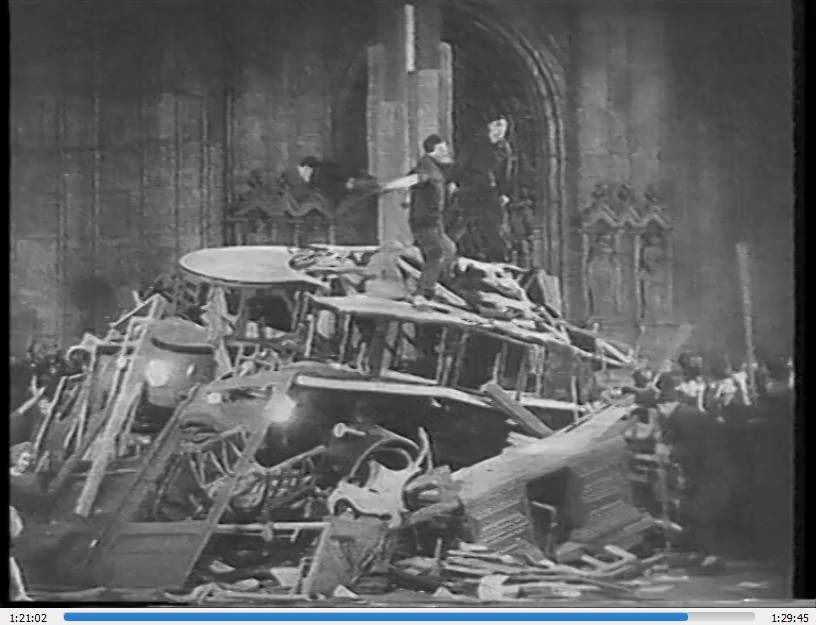| Return home |  |
Return to previous page |
Time to mention two Harvard students,
Bryant Haliday and Cyrus Harvey, Jr., who
owned and operated the 55th Street Playhouse in Manhattan and the Brattle in Cambridge, MA.
(55th Street Playhouse,
Treanor and Fatio architects, 253 seats.)
In December 1954, they announced a series of ten German and Soviet silent films coming to the 55th Street Playhouse in Manhattan in
to run for nearly two months.
Included in that series was Metropolis.
Take a look.
There’s something really surprising here:
|
For the two or three who are curious:
Siegfried Kriemhild’s Revenge Tartuffe Secrets of a Soul The Love of Jeanne Ney Berlin, Symphony of a City October (Ten Days That Shook the World) The End of St. Petersburg Battleship Potemkin. |
Where did they get those movies?
Well, the program notes inform us that they got the movies from
Thomas J. Brandon,
owner of a distributorship called Brandon Films.
Now, Brandon Films specialized in nontheatrical bookings, such as churches, schools, libraries, film societies, and so forth.
Yet I discover that
Brandon Films also released an abridgment of Diary of a Country Priest to cinemas in 1954!!!
So Brandon Films had two arms, a
commercial arm and a
noncommercial arm.
It appears from the above brochure that Mr. Brandon was also associated with Cinema Classics Releasing.
I have Googled and Googled and Googled to no avail,
and I scoured the online newspaper archives but I came up empty.
All I can do is guess.
My guess is that Cinema Classics Releasing was a DBA or subsidiary of Brandon Films,
concentrating on commercial repertory product.
Alas, if what I surmise is correct, it was just a few years too early.
The world was not quite ready for repertory cinemas in 1955.
In 1960, yes, but not in 1955.
It is good to be the pioneer, but it is not good to be too much of a pioneer.
So where in the blazes did Mr. Brandon acquire these ten films?
That is a mystery, is it not?
Those ten films were silents from the 1920’s that had not been shown in the US since the early 1930’s.
Yes, MoMA had them available for nonprofit educational showings, but the films were not available commercially.
I know of no other commercial bookings in those years.
So how did Brandon Films and/or Cinema Classics get hold of them?
Shall we attempt to think this through?
As far as I know, the only commercial distributor of Metropolis anywhere in the world at that time
was Associated British Picture Corporation (together with sublicensee National Films of N.S.W.).
Did Tom Brandon merely sublicense the rights from Associated British?
Had he done that, there would have been a soundtrack,
but yet we learn from the above brochure that the “musical settings”
were by one Herman G. Weinberg.
Now, Herman was many things, but one of those things was not musician.
(He studied the violin but gave up when he decided he was insufficiently talented.)
Did he just spin discs as the films played?
Did Herman provide the music for all the films, or just for most of them?
Were these films even 35mm?
Now, when it opened in May 1927, the 55th Street Playhouse had a
Robert Morton organ
(opus 20058) for accompaniment, with V.G. Purvis at the console.
Was the organ removed just because those blasted talkies took over?
If you have a theatre, but if you don’t have a fully rigged stage,
if you don’t have a pipe organ,
if you don’t have live acoustics,
if you don’t have an orchestra pit or orchestra chamber,
then you don’t have a theatre.
It appears that
the three Soviet films were licensed from Artkino,
which I think would make perfect sense.
Brandon and/or Cinema Classics may have sublicenced the seven German films, but from whom?
There is a little more info on the “Classic Horror Forum” chat group.
Steve Joyce (“Barbenfouillis”) posted a followup message on 17 March 2023 with this tasty morsel:
|
In 1954, the censorship of 1927 was revisited... now with Brandon Films on West 57th Street in NYC (Thomas J Brandon, Pres).
The files include some back and forth as to which reel actually needed censorship (7 or 8).
Subsequently, permission was apparently granted for Brandon Films to show the film with previously offending scenes in New York for artistic purposes.
|
The March 1927 Paramount version was no longer available.
By 1945 it was locked away, unseen, in a vault at Gosfilmofond in Moscow.
So, Brandon and the local NYC censor were definitely discussing a different edition of the film.
What edition might that have been?
The only known prints at that time were the MoMA edition and the Associated British edition.
Nothing else was available back then.
Or so I thought.
The answer is now in my greedy little hands:
Thomas J. Brandon licensed the German films from the
United States Office of Alien Property.
Metropolis was 16mm, just as I had suspected, but not for the reason I had suspected.
Obviously, it was mounted onto 400' reels.
I suppose the other German films were also 16mm, but I really don’t know.
The 55th Street Playhouse was the only booking, at least for the time being,
though eventual television broadcasts were also being considered.


